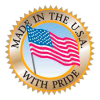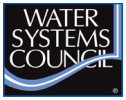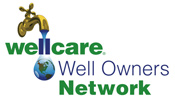NITRATES: ORIGINS AND HEALTH AFFECTS
Nitrogen is essential for plant growth, but the presence of excessive amounts in water supplies presents a major pollution problem. Nitrogen compounds may enter water as nitrates or be converted to nitrates from agricultural fertilizers, sewage, industrial and packing house wastes, drainage from livestock feeding areas, and farm manures. Nitrates are found in groundwater systems across the Northeast and Mid-Atlantic regions in the United States but can also be a nuisance for municipal and public water supplies. The EPA's primary drinking water standard for Nitrate (NO3- as N) is 10 mg/L. Nitrate levels in private water wells typically range from 0-10 mg/L. However, nitrate levels have been known to exceed 10 mg/l, and can reach as high as 100 mg/L. Nitrates have no detectable color, odor, or taste when dissolved in water, and do not cause issues related to residential use like cleaning, laundering, or dish washing.
Nitrate levels in water equal to or greater than 10 mg/L are considered a health hazard for infants. Infants exposed to this level of nitrate can result in methemoglobinemia, also known as "blue baby syndrome." This occurs when Nitrate (NO3-) is broken down to nitrite (NO2-) in the gastrointestinal system. Nitrite then enters the bloodstream to form a complex with hemoglobin, the oxygen carrying mechanism, to form methemoglobin. This results in a bluish discoloration of the body known as "blue baby syndrome" that can result in serious illness or death.
TREATMENT OPTIONS
There are two common options for removing nitrates from drinking water. The first, and most common option, is a Point of Use (POU) reverse osmosis system. Health affects associated with nitrates are a direct result of oral consumption (i.e. drinking water) and not from dermal exposure (i.e. showering or hand washing), thus the need to only treat water that is going to be used for drinking or cooking. However, for customers with a greater concern, a Point of Entry reverse osmosis system can be used to treat water for an entire home. The use of a reverse osmosis system will also result in a reduction of overall total dissolved solids and a range of other contaminants. Master Water has multiple POU and POE Reverse Osmosis systems available.
WOW RO Brochure
PuroPro Brochure
Puro35T Brochure
The second option is a nitrate selective anion exchange system. A special strong-base anion nitrate selective resin is used in the system. The mechanical function of the nitrate unit is very similar to a cation exchange water softener. The nitrate units are typically regenerated with a NaCl brine solution. However, the resin exchanges chloride for nitrate, rather than sodium for hardness ions. Nitrate resin systems are typically used in commercial applications, but can be applicable for residential applications as well. Nitrate resin systems are typically preferred over POE R.O. systems, since they cost less, are less maintenance intensive, and are often significantly more efficient.
NITRATE TESTING
If you are concerned about nitrates in your private water well or municipal water supply, then you should have your water tested by an EPA certified laboratory. Municipal water companies will have water testing results available for their customers. For private well owners, nitrates are typically tested for in any water potability test. Private well owners should have their water tested annually or biannually by a certified laboratory for their own records. Below is a list of Accredited laboratories in Pennsylvania, organized by county.









